Economy &
Resources
Diverse Economy
THE DRIVING FORCE
Renewable natural resources and the growth of the visitor sector power the island's economy
Fish, timber, visitors and minerals are fundamental for the economy of Prince of Wales Island. While resource-based components are relatively steady, the visitor industry is taking a greater role.
Access to the island and ease of travel on the island are essential in the growth of the visitor sector. The Inter-Island Ferry Authority’s daily sailings between Hollis and Ketchikan provide a link for vehicles and
people—more than 44,000 people and 9,800 vehicles in 2016. The island's unique road system, ranging across more than 1,500 miles, interlocks communities and makes a number of natural resource bases accessible—from timber to hiking trails.
Access to the island and ease of travel on the island are essential in the growth of the visitor sector. The Inter-Island Ferry Authority’s daily sailings between Hollis and Ketchikan provide a link for vehicles and
people—more than 44,000 people and 9,800 vehicles in 2016. The island's unique road system, ranging across more than 1,500 miles, interlocks communities and makes a number of natural resource bases accessible—from timber to hiking trails.
Several air carriers using floatplanes provide scheduled and charter service to POW communities. Businesses and residents on the northeast side of POW maintain ties to Wrangell, to the north on another island. Chartered boats and floatplanes link Coffman Cove to Wrangell. Air carriers using wheeled aircraft take off from Klawock Airport's paved runway to regional commercial hubs such as Ketchikan and Sitka.
The service sector flourishes in areas from fishing charters to lodging—as seen in ads and the directory in this book. Retailers ride the growth curve as more and more people come to the island to see a unique Alaskan setting and friendly communities. A survey found that ferry-borne visitors' average stay is 13 days.
The service sector flourishes in areas from fishing charters to lodging—as seen in ads and the directory in this book. Retailers ride the growth curve as more and more people come to the island to see a unique Alaskan setting and friendly communities. A survey found that ferry-borne visitors' average stay is 13 days.
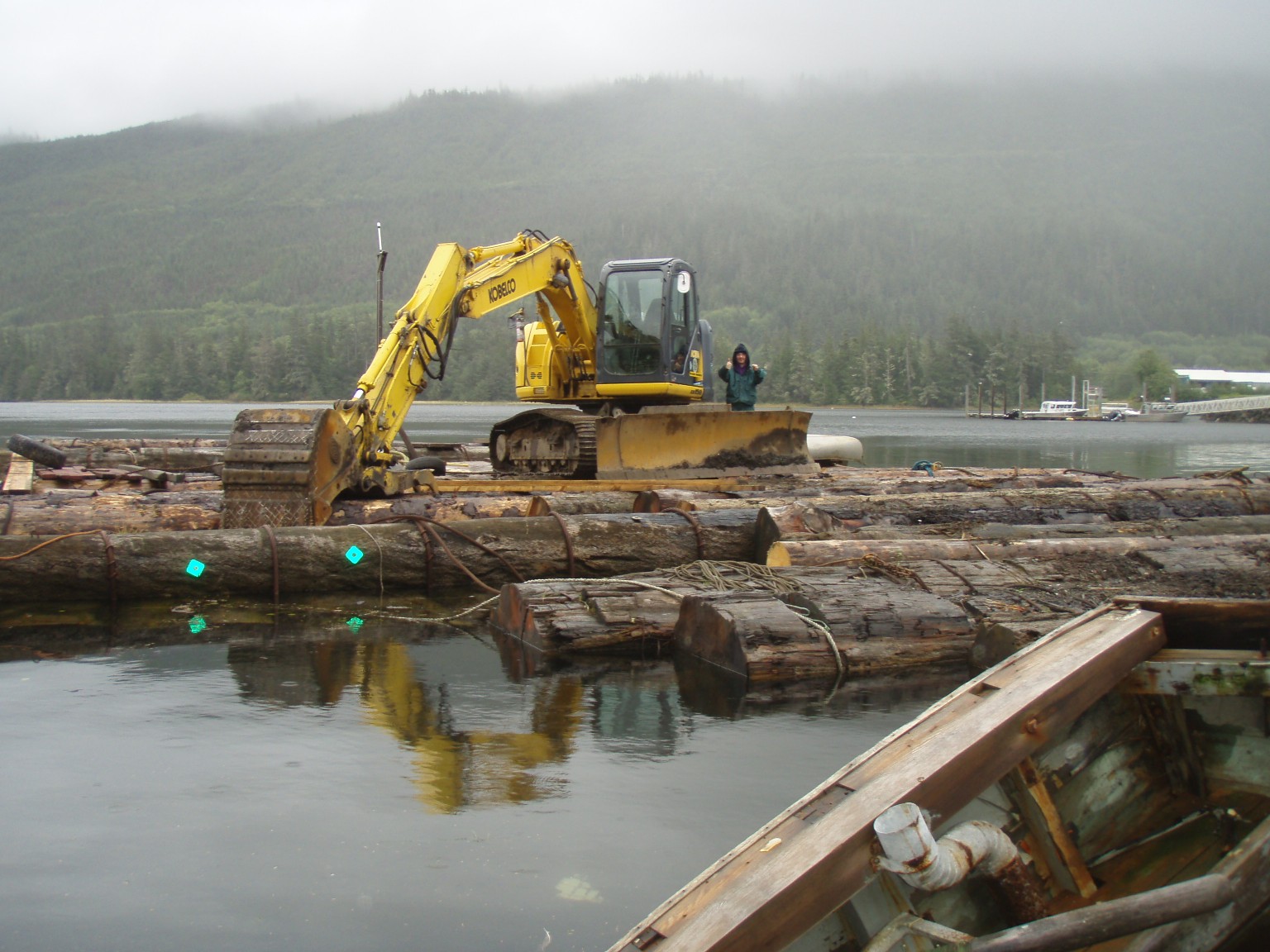
The historic mainstays of the economy are commercial fishing, timber, and mining.
The glory years of timbering ended in 1997, when a world-class pulp mill closed in Ketchikan, but the sawmill at Viking Lumber Co. in Klawock employs dozens directly and contributes to a wide swath of support jobs. Small mills operate in other areas, producing rough-cut lumber and cedar shakes.
Mining faded as an economic force by the mid-1900s, but mineral extraction may be poised for a comeback. Bokan Mountain in a remote Southern arm of the island has proven veins of rare earth metals. Nova Scotia-based Ucore is performing pre-mining activities and promoting Bokan as a strong competitor for China’s globally preeminent supply. Rare earth elements (REEs) are in technologies from hybrid cars to weapon systems and mobile electronics. Ucore judged Bokan Mountain to be the best prospect in the U.S. for REEs in a 2015 feasibility study.
The Alaska Legislature authorized the state’s industrial development agency to issue as much as $270 million in bonds to help develop prospective mines if the minerals prove economically recoverable.
The glory years of timbering ended in 1997, when a world-class pulp mill closed in Ketchikan, but the sawmill at Viking Lumber Co. in Klawock employs dozens directly and contributes to a wide swath of support jobs. Small mills operate in other areas, producing rough-cut lumber and cedar shakes.
Mining faded as an economic force by the mid-1900s, but mineral extraction may be poised for a comeback. Bokan Mountain in a remote Southern arm of the island has proven veins of rare earth metals. Nova Scotia-based Ucore is performing pre-mining activities and promoting Bokan as a strong competitor for China’s globally preeminent supply. Rare earth elements (REEs) are in technologies from hybrid cars to weapon systems and mobile electronics. Ucore judged Bokan Mountain to be the best prospect in the U.S. for REEs in a 2015 feasibility study.
The Alaska Legislature authorized the state’s industrial development agency to issue as much as $270 million in bonds to help develop prospective mines if the minerals prove economically recoverable.

Several air carriers using floatplanes provide scheduled and charter service to POW communities. Businesses and residents on the northeast side of POW maintain ties to Wrangell, to the north on another island. Chartered boats and floatplanes link Coffman Cove to Wrangell. Air carriers using wheeled aircraft take off from Klawock Airport's paved runway to regional commercial hubs such as Ketchikan and Sitka.
The service sector flourishes in areas from fishing charters to lodging—as seen in ads and the directory in this book. Retailers ride the growth curve as more and more people come to the island to see a unique Alaskan setting and friendly communities. A survey found that ferry-borne visitors' average stay is 13 days.
The service sector flourishes in areas from fishing charters to lodging—as seen in ads and the directory in this book. Retailers ride the growth curve as more and more people come to the island to see a unique Alaskan setting and friendly communities. A survey found that ferry-borne visitors' average stay is 13 days.
Prince of Wales Island
THRIVING MARICULTURE
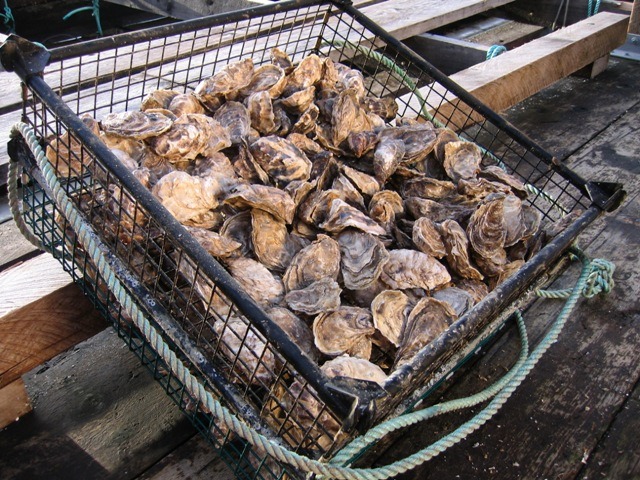
WORLD CLASS
Delicacies
Prince of Wales Island oysters are world-class delicacies and commercial farming is a fast-growing economic component. Nearly a dozen producers operate in our cold, nutrient-rich waters—most in Sea Otter Sound. Farms range from mom-and-pop operations with fewer than 100,000 oysters in the water to large commercial growers with more than 1.5 million oysters. Naukati Bay is home to a community-owned oyster nursery that is on track to supply over 2 million baby oysters to oyster farms in Southeast Alaska.
The oysters are shipped to wholesalers in Alaska and in the Lower 48. Portions of production also go to high-end restaurants, lodges, cruise ships and oyster connoisseurs as far away as Hawaii. These bivalves are not indigenous to Alaska because our cold water thwarts natural reproduction. Oyster seed, or spat, is produced in hatcheries and sold to oyster farmers who grow out the shellfish in floating arrays, subject to strict regulations and regular safety sampling.
The oysters are shipped to wholesalers in Alaska and in the Lower 48. Portions of production also go to high-end restaurants, lodges, cruise ships and oyster connoisseurs as far away as Hawaii. These bivalves are not indigenous to Alaska because our cold water thwarts natural reproduction. Oyster seed, or spat, is produced in hatcheries and sold to oyster farmers who grow out the shellfish in floating arrays, subject to strict regulations and regular safety sampling.
The Island Life.
SUBSISTENCE LIVING
Many residents of Prince of Wales Island engage in subsistence fishing, hunting and gathering throughout the year. This food is preserved by smoking, freezing, drying and canning to be eaten during the winter months. These activities help offset the high cost of living here.
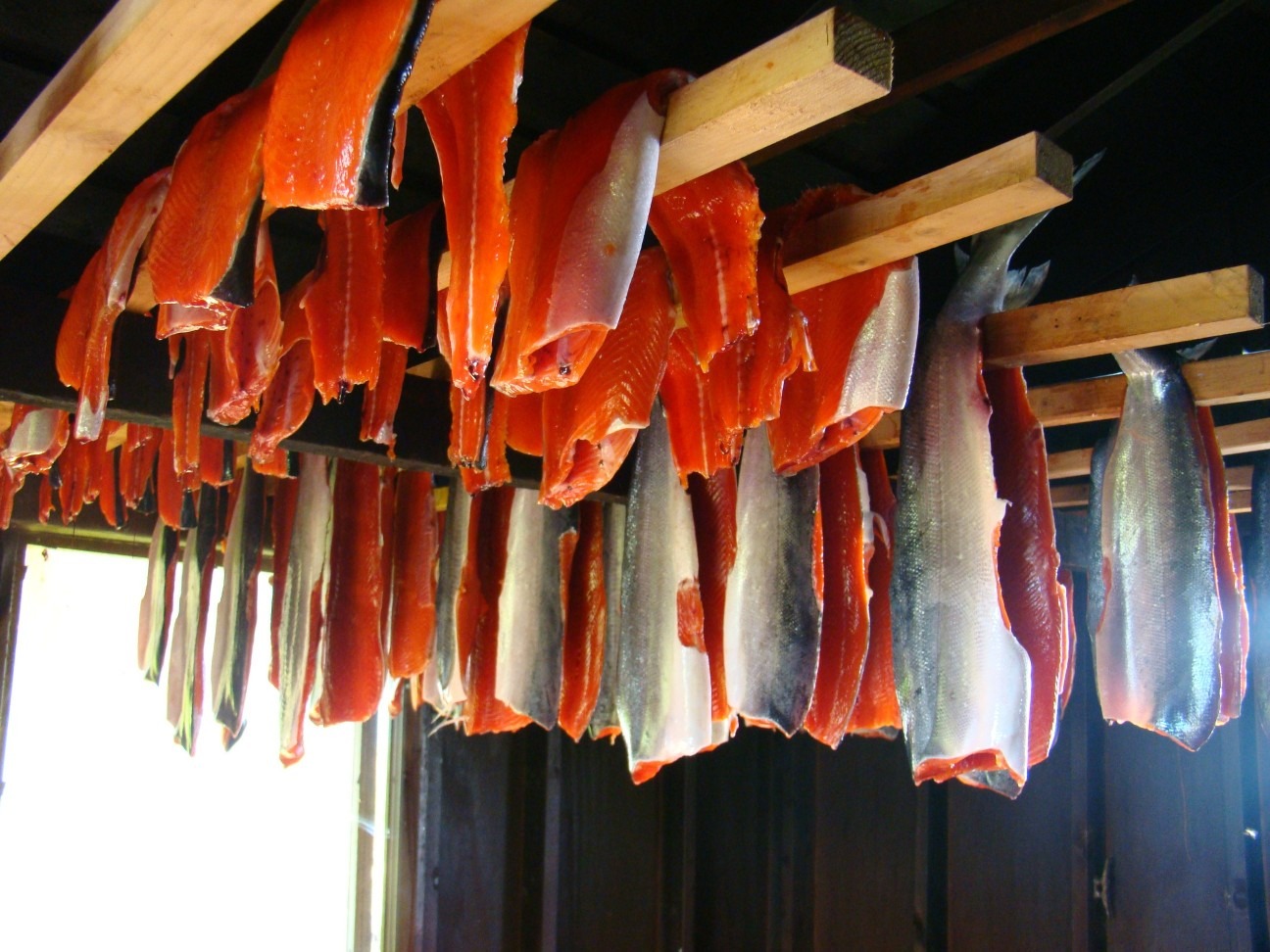
Dried Salmon
Salmon caught through subsistence fishing activities, such as dip-netting, are commonly dried or smoked and then either frozen or canned for later use.
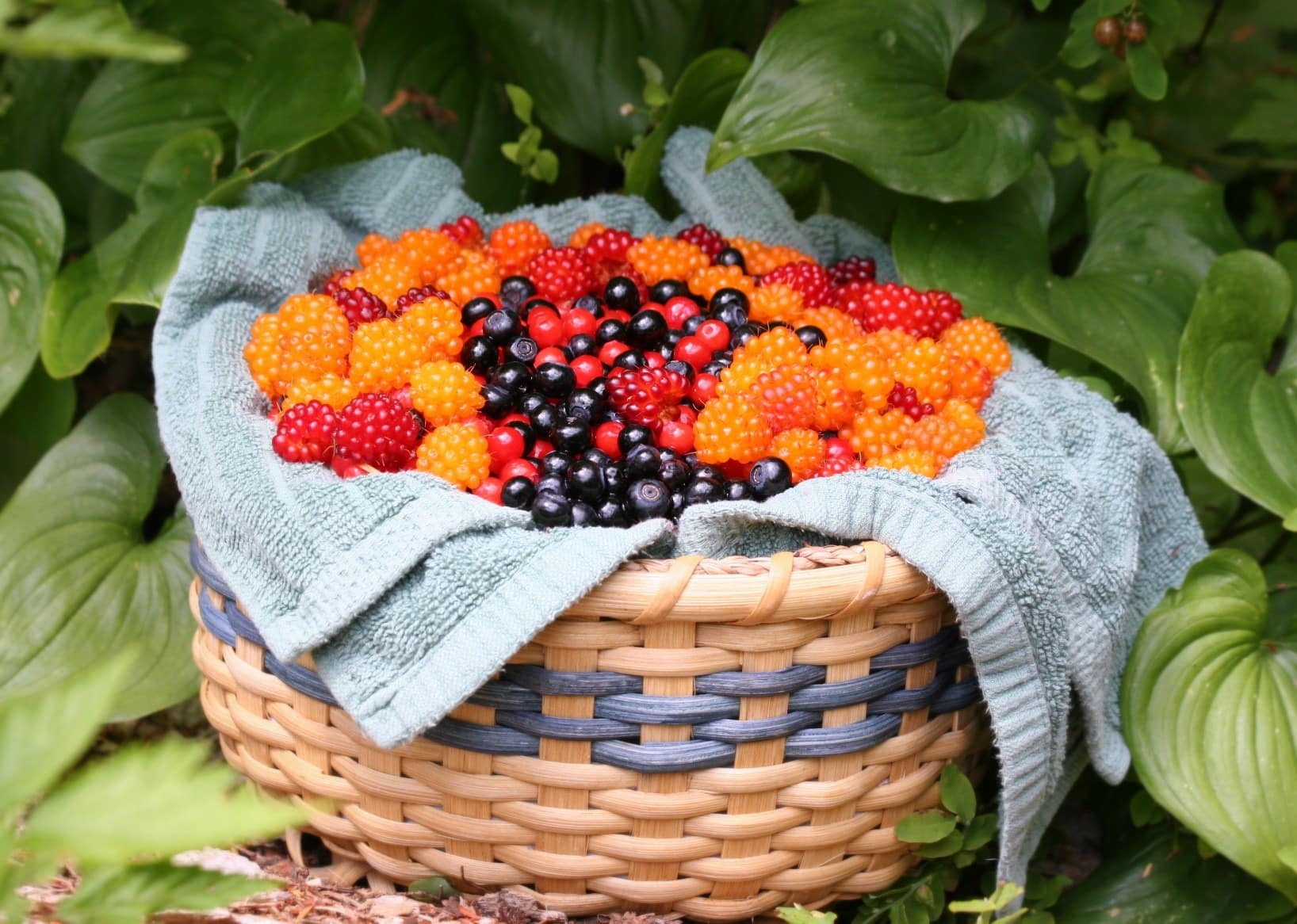
Berry Harvest
Berries are abundant on the island, including salmon berries, red and blue huckleberries, and thimble berries. Jams and jellies are made and canned.
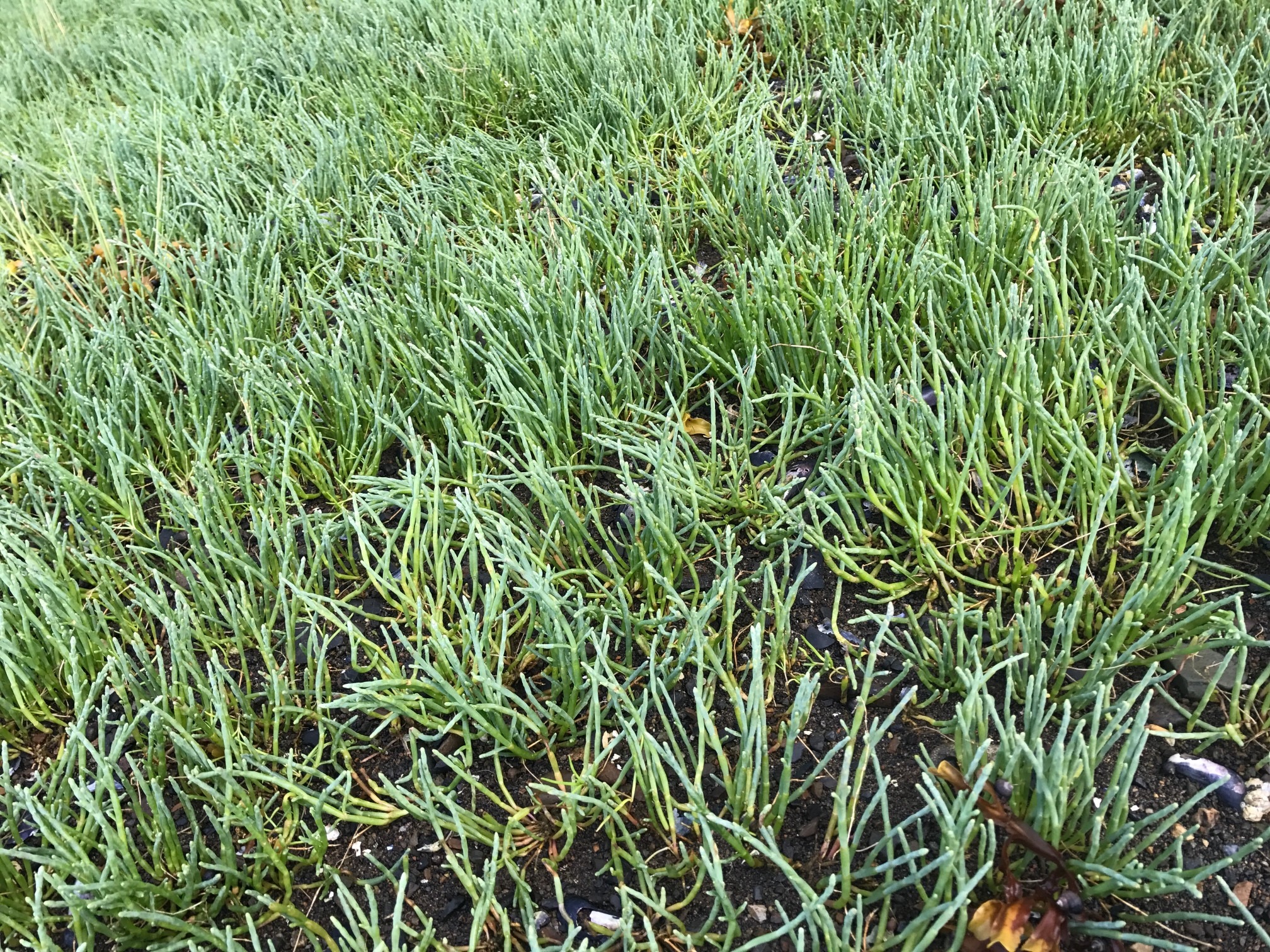
Beach Asparagus
Beach asparagus, beach greens, and bull kelp are gathered in spring and early summer, pickled and canned. Ask a local to try a taste - delectable!
